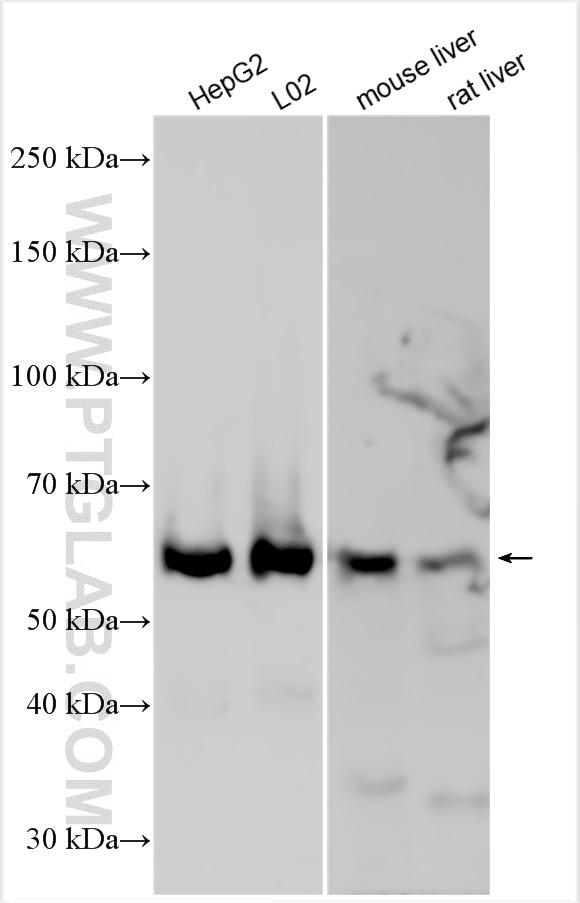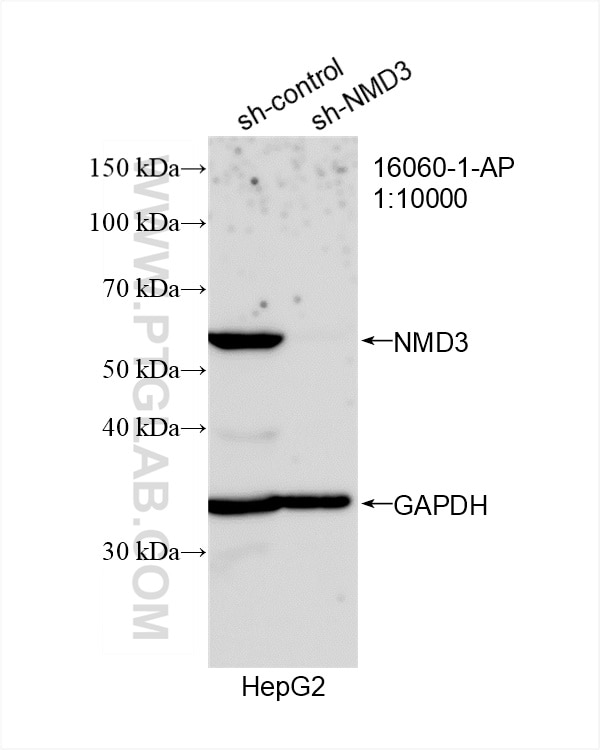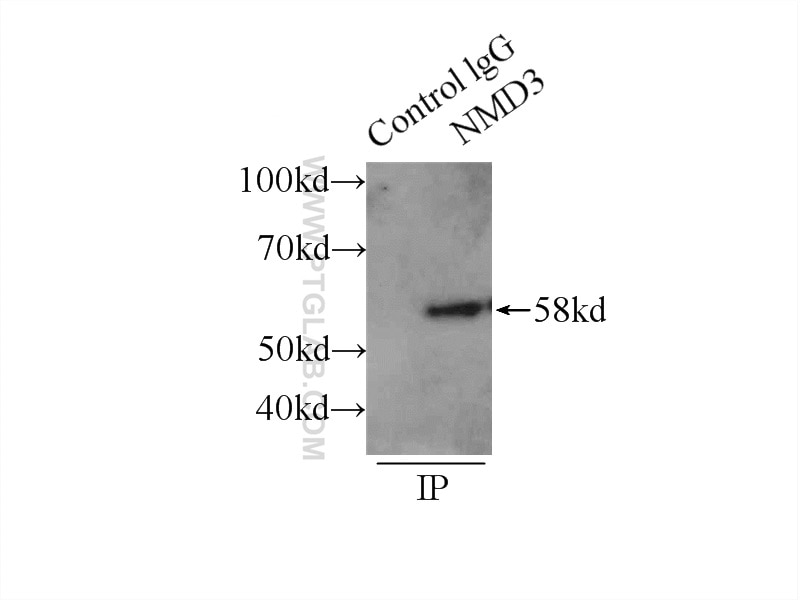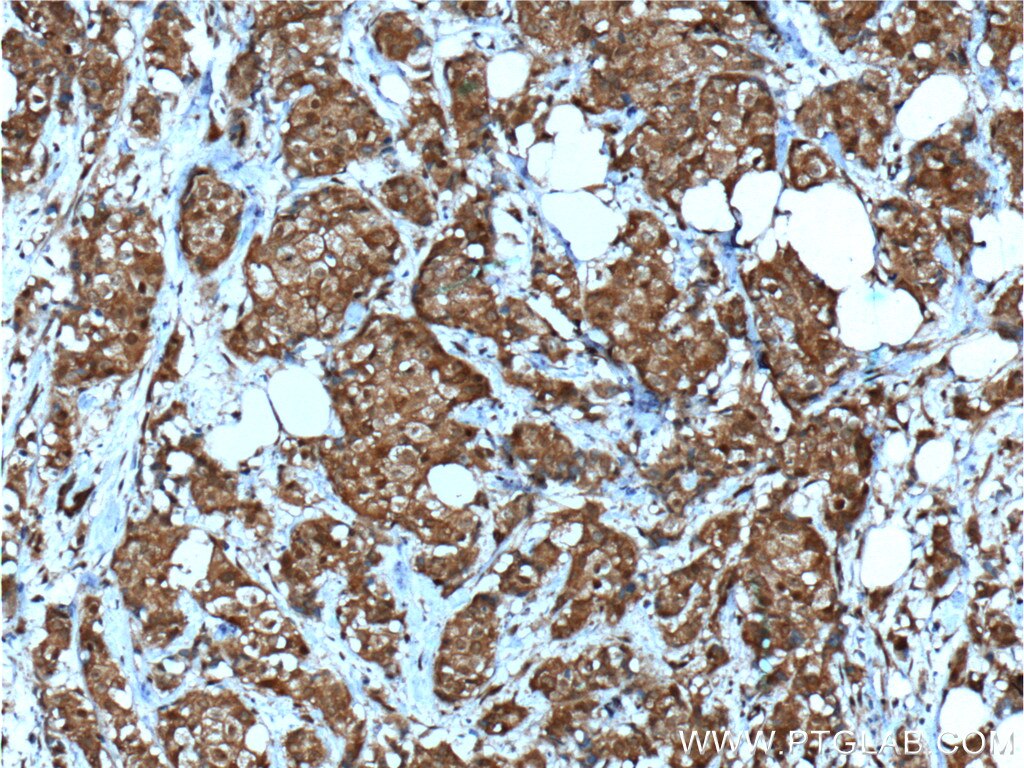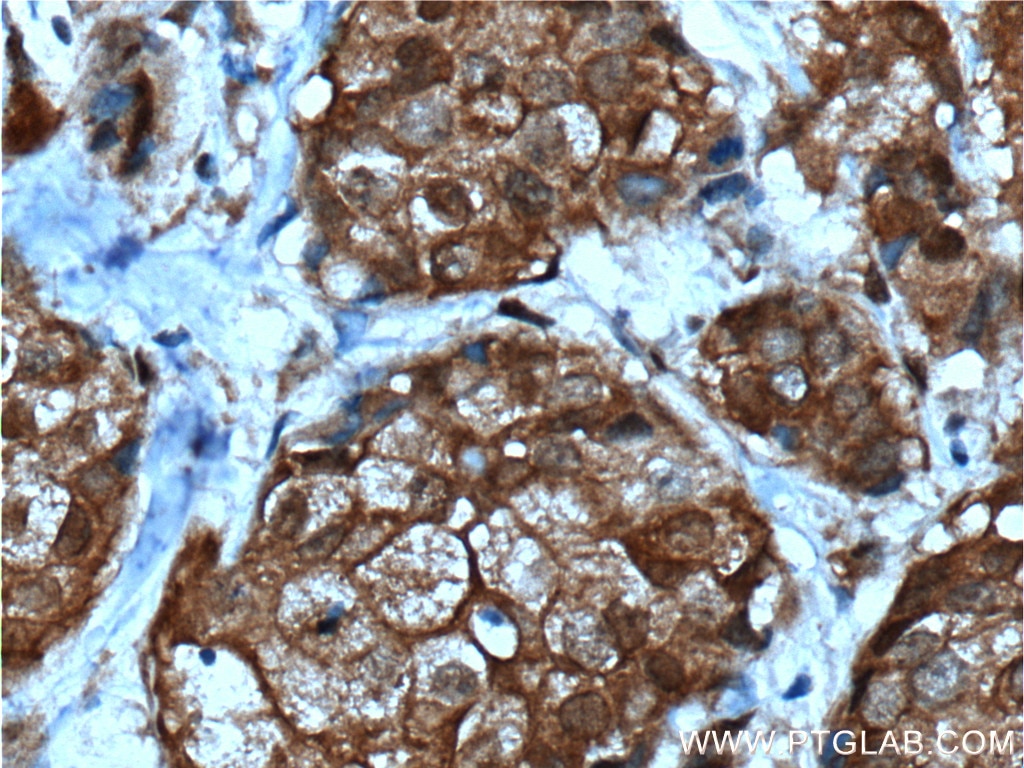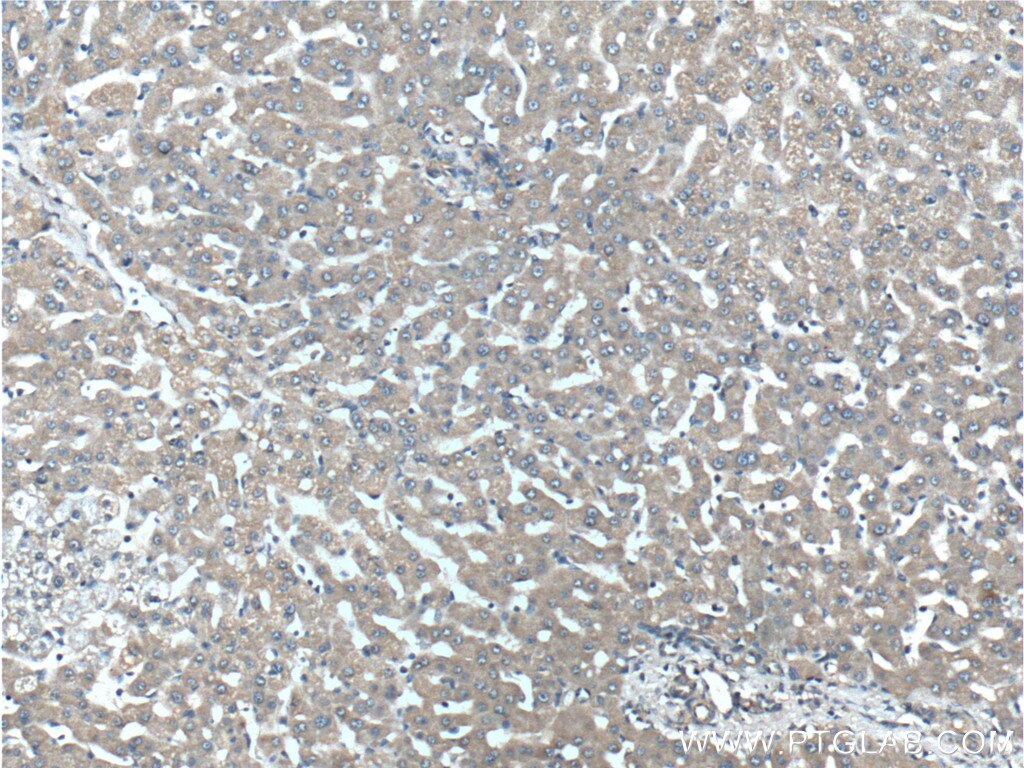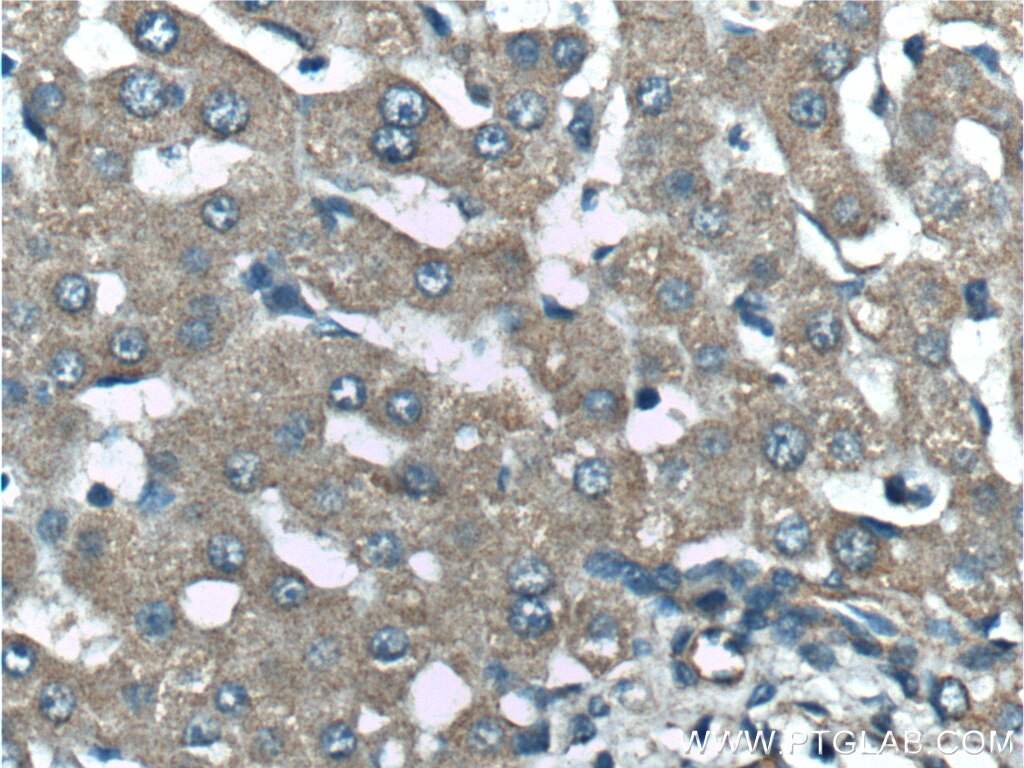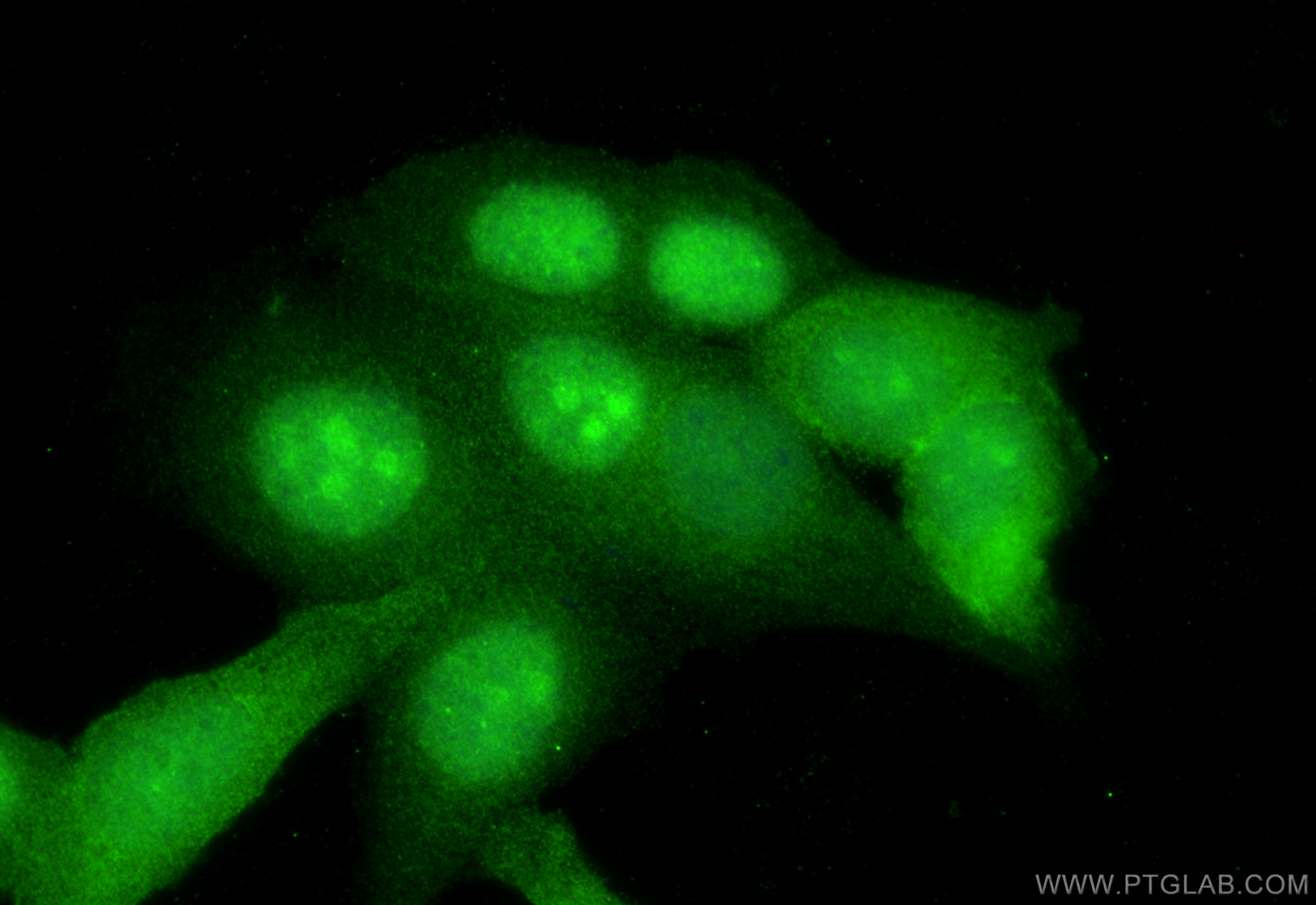- Phare
- Validé par KD/KO
Anticorps Polyclonal de lapin anti-NMD3
NMD3 Polyclonal Antibody for WB, IHC, IF/ICC, IP, ELISA
Hôte / Isotype
Lapin / IgG
Réactivité testée
Humain, rat, souris
Applications
WB, IHC, IF/ICC, IP, ELISA
Conjugaison
Non conjugué
N° de cat : 16060-1-AP
Synonymes
Galerie de données de validation
Applications testées
| Résultats positifs en WB | cellules HepG2, cellules L02, tissu hépatique de rat, tissu hépatique de souris |
| Résultats positifs en IP | cellules HepG2 |
| Résultats positifs en IHC | tissu de cancer du sein humain, tissu hépatique humain il est suggéré de démasquer l'antigène avec un tampon de TE buffer pH 9.0; (*) À défaut, 'le démasquage de l'antigène peut être 'effectué avec un tampon citrate pH 6,0. |
| Résultats positifs en IF/ICC | cellules HepG2, |
Dilution recommandée
| Application | Dilution |
|---|---|
| Western Blot (WB) | WB : 1:5000-1:50000 |
| Immunoprécipitation (IP) | IP : 0.5-4.0 ug for 1.0-3.0 mg of total protein lysate |
| Immunohistochimie (IHC) | IHC : 1:50-1:500 |
| Immunofluorescence (IF)/ICC | IF/ICC : 1:50-1:500 |
| It is recommended that this reagent should be titrated in each testing system to obtain optimal results. | |
| Sample-dependent, check data in validation data gallery | |
Applications publiées
| KD/KO | See 1 publications below |
| WB | See 8 publications below |
| IF | See 3 publications below |
Informations sur le produit
16060-1-AP cible NMD3 dans les applications de WB, IHC, IF/ICC, IP, ELISA et montre une réactivité avec des échantillons Humain, rat, souris
| Réactivité | Humain, rat, souris |
| Réactivité citée | Humain, souris |
| Hôte / Isotype | Lapin / IgG |
| Clonalité | Polyclonal |
| Type | Anticorps |
| Immunogène | NMD3 Protéine recombinante Ag8894 |
| Nom complet | NMD3 homolog (S. cerevisiae) |
| Masse moléculaire calculée | 503 aa, 58 kDa |
| Poids moléculaire observé | 58 kDa |
| Numéro d’acquisition GenBank | BC013317 |
| Symbole du gène | NMD3 |
| Identification du gène (NCBI) | 51068 |
| Conjugaison | Non conjugué |
| Forme | Liquide |
| Méthode de purification | Purification par affinité contre l'antigène |
| Tampon de stockage | PBS with 0.02% sodium azide and 50% glycerol |
| Conditions de stockage | Stocker à -20°C. Stable pendant un an après l'expédition. L'aliquotage n'est pas nécessaire pour le stockage à -20oC Les 20ul contiennent 0,1% de BSA. |
Informations générales
Human NMD3 gene encodes 60S ribosomal export protein which was found in a 60S ribosomal subunit export complex with RAN and XPO1. This nucleocytoplasmic shuttling protein NMD3 is an adaptor for export of the 60S ribosomal subunit from the nucleus. NMD3 contains a CRM-1-dependent leucine-rich nuclear export signal (NES) and a dispersed nuclear localization signal (NLS), the basic region of which is also required for nucleolar accumulation. NMD3 are required for nuclear export of the 60S ribosomal subunit in yeast and vertebrate cells, recent finding has also revealed its role in Arabidopsis thaliana.
Protocole
| Product Specific Protocols | |
|---|---|
| WB protocol for NMD3 antibody 16060-1-AP | Download protocol |
| IHC protocol for NMD3 antibody 16060-1-AP | Download protocol |
| IF protocol for NMD3 antibody 16060-1-AP | Download protocol |
| IP protocol for NMD3 antibody 16060-1-AP | Download protocol |
| Standard Protocols | |
|---|---|
| Click here to view our Standard Protocols |
Publications
| Species | Application | Title |
|---|---|---|
Cell Stem Cell HectD1 controls hematopoietic stem cell regeneration by coordinating ribosome assembly and protein synthesis. | ||
Genes Dev Uncoupling of GTP hydrolysis from eIF6 release on the ribosome causes Shwachman-Diamond syndrome. | ||
Biomolecules Mutations of Key Functional Residues in CRM1/XPO1 Differently Alter Its Intranuclear Localization and the Nuclear Export of Endogenous Cargos | ||
EMBO Mol Med Portimine A toxin causes skin inflammation through ZAKα-dependent NLRP1 inflammasome activation | ||
Science A subcellular map of translational machinery composition and regulation at the single-molecule level |
